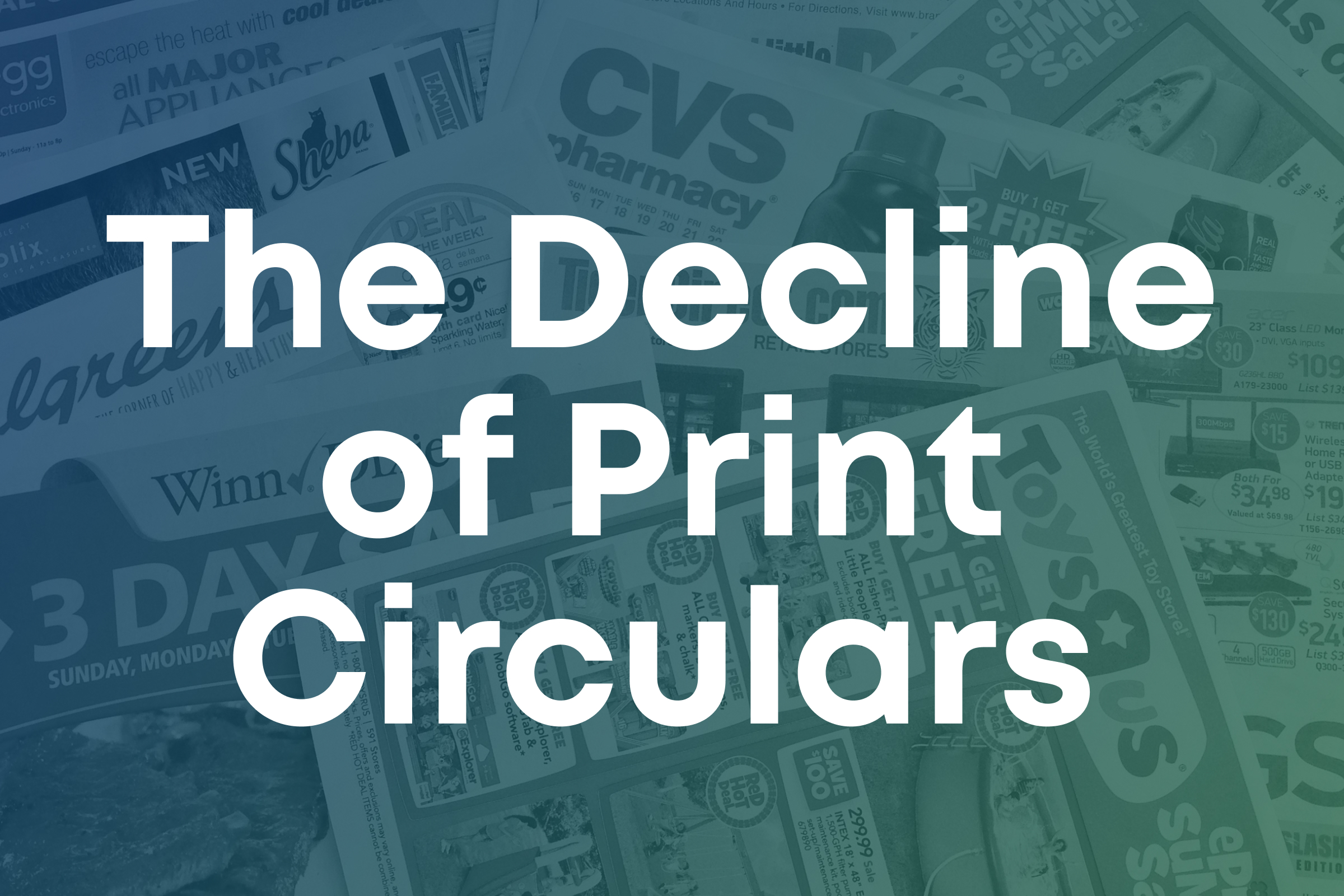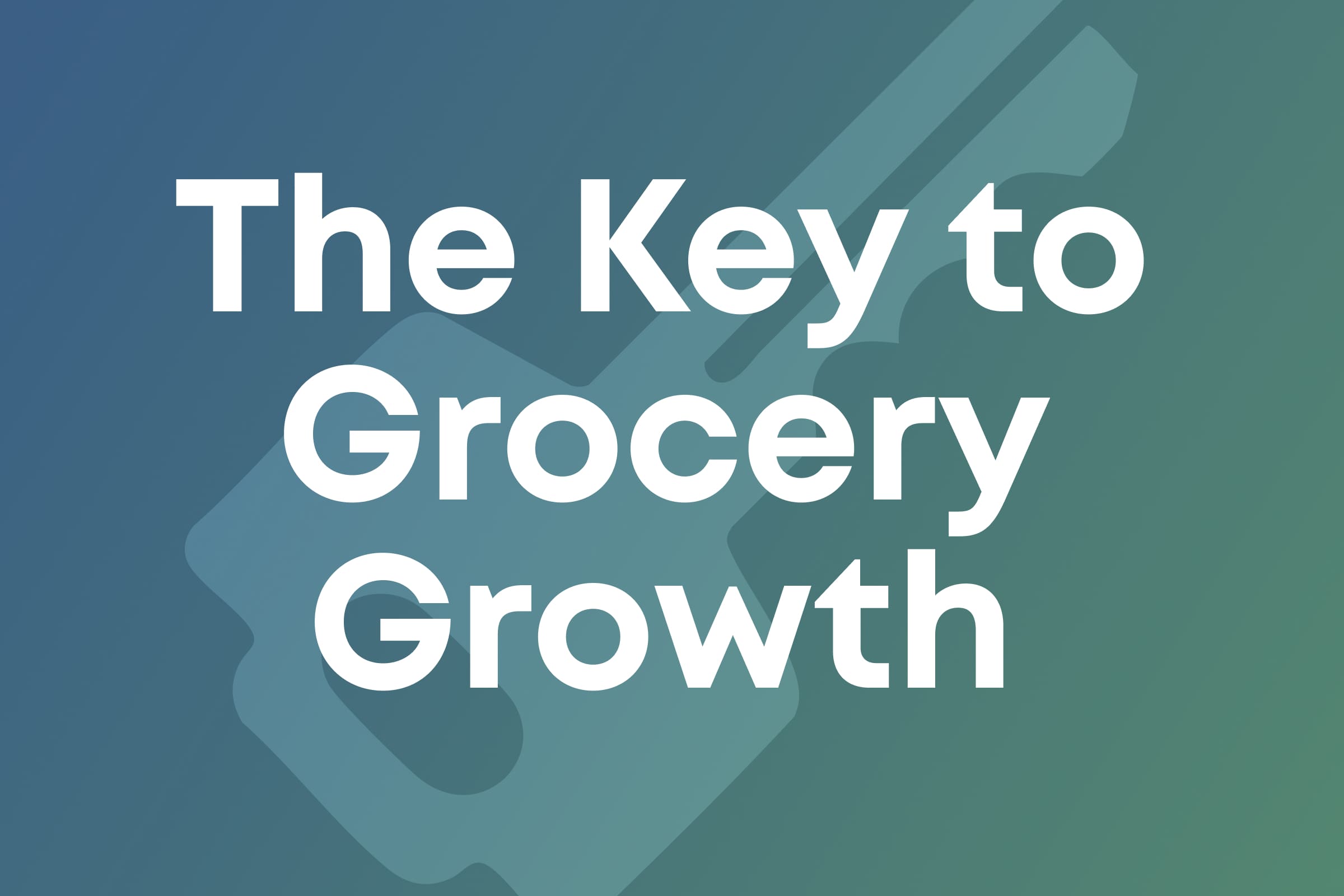From Legal Pads to iPads: The Future of Grocery is Digital
Sean Turner
For many years, the grocery industry seemed immune to the digital disruption taking place across other retail sectors. While shoppers were content to buy a sweater or an ice cream scoop online, they were far less likely to order a steak or a bag of apples. Grocery continued to operate — in a somewhat outdated fashion — relying on their physical store presence as a differentiator. They offered convenient locations, service with a smile, product selection, weekly circular deals and coupons that rivaled the best e-commerce offers.
But in 2022, simply existing as a physical store is not enough to survive. Shoppers have become more tech-savvy, relying on their smartphones more than ever to find savings, plan their shopping trips and to connect with their favorite stores and brands.
It’s time for grocers to ditch the legal pad and pick up the iPad… the future has crept into the grocery industry, and you don’t want to be left behind.
Today’s Shifting Retail Landscape
The global pandemic and its after-effects accelerated digital transformation across all retail sectors — grocery included. Customers have developed new habits in the past two years and all of them are centered around convenience, savings and technology. Access to both online and in-store option have created a hybrid shopper who expects stores to offer the tools and technology that are very much a new normal in the industry. Grocers who don’t take the leap will find themselves struggling to keep up with the competitors who do.
And, while the impacts of the pandemic are slowing disappearing into our collective rearview, new challenges continue to arise in our industry. All-time high inflation has replaced lockdowns and safety concerns as the prevailing disruptor and customers are looking to retailers to help them navigate.
Although 90% of shoppers prefer to shop in-store, e-commerce continues to grow. Many consumers say they’re buying more groceries online due to:
- Time-saving (45%)
- Convenience (30%)
- Lingering health concerns (28%)
While online purchases accounted for less than 4% of total grocery sales in 2019, e-commerce will likely surpass 20% of market share by 2026, given the rapid growth of grocery delivery.
Studies also estimate consumers will increase their mobile channel usage by 14% over the next year, with mobile web and app shopping increasing at three times the rate of desktop over the next two years. The moral of the story? Unless grocers act now to put convenience and savings in the—literal—palm of their customers’ hands, they’ll find them flocking to retailers who’ve chosen technology over tradition.

The Digital Transformation of Grocery
With this new normal comes a new to-do list for grocers. Connecting in-store and digital experiences for shoppers is at the very top. This crucial step will allow brick-and-mortar grocers to offer their consumers the ultimate in flexibility and value. Grocers thrive when they meet the demands of increasingly mobile-connected shoppers — whose behavior is driven by time and savings.
So, where do you begin? Grocery retail digital transformation takes shape with these three necessary solutions:
Robust Mobile Tools
A grocer’s feature-rich retail mobile application delivers local pricing, products and promotions directly to consumers. Mobile tools quickly become a habitual way for shoppers to plan frustration-free trips to the store and supplement with delivery when it’s convenient. In-store, newer features like curbside pickup and cashier-less checkout are raising the bar on convenience and revolutionizing the way people shop.
A Competitive Loyalty Program
A grocery loyalty platform builds further value with personalized offers based on first-party data collected through the shopping app. Consumers consent to technology that tracks their habits and preferences in exchange for a better buying experience. What’s more, the use of loyalty programs translates to bigger basket sizes, more trips to the store, and higher overall lifetime customer value.
Ownership of Retail Media
At the same time, a consumer-facing digital retail platform — put right at the point of purchase — creates a new revenue stream for brick-and-mortar grocers through CPG advertising partnerships. By enabling a retail media network, shoppers can reap the value of personalized manufacturer-funded discounts, while grocers leverage margin-rich revenue and grow market share.
Embracing the Digital Future
Use of a digital retail platform that connects the online and in-store experience has become second nature for shoppers and critical for grocers. Before people head into their local grocery store, they’re checking digital circulars, coupons, and recipes to make their virtual shopping lists. They’re purchasing hard-to-find items online, shipped directly to their homes. In a pinch, they’re ordering curbside pickup rotisserie chicken on their way home from work and one-hour grocery delivery to save time before a party. In-aisle, they’re looking up ingredients, nutrition facts, competing products and loyalty program details to inform their decisions and find the best prices.
Digital engagement has become the “new normal” for grocery retail, and there’s no going back to paper circulars, plastic reward cards, or traditional foot traffic marketing strategies. Future-facing brick-and-mortar grocers must position themselves to thrive by developing flexible, in-house capabilities so they can keep pace with the latest advancements without becoming reliant on third-party vendors. With the right partners, your technology to-do list can be checked out faster than you think, setting you up to compete and thrive no matter what the future holds.
Contact Swiftly to learn more.




